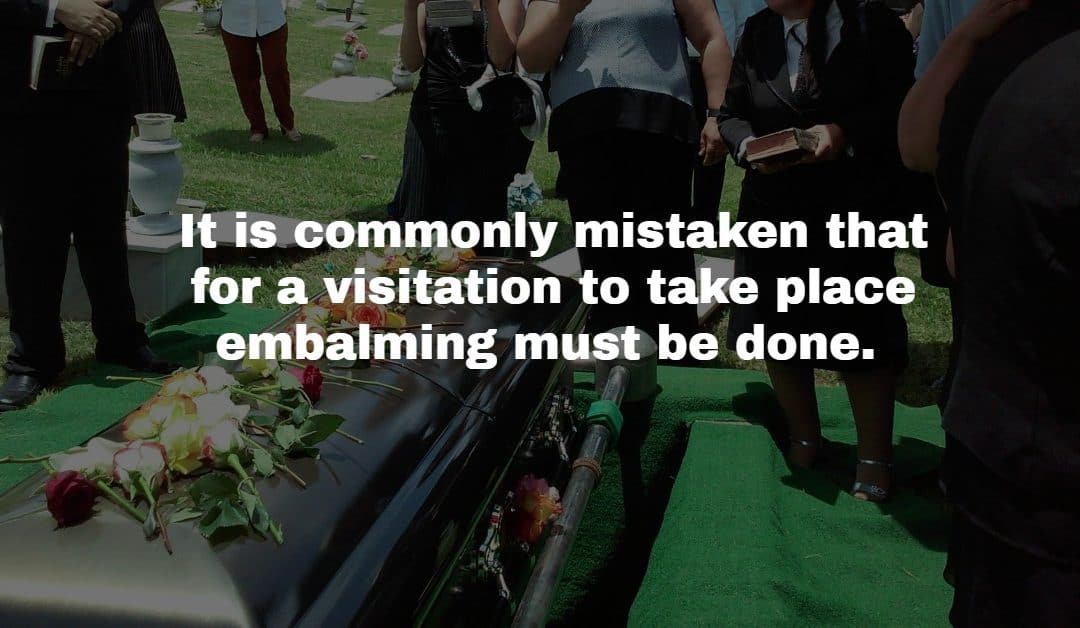It is commonly mistaken that for a visitation to take place embalming must be done. Embalming, in a very basic definition, is the act of preserving a body by replacing body fluids with a preserving solution (usually an aldehyde and/or alcohol as a solvent).
Many funeral homes will not allow a public viewing unless embalming is performed. It is not a state or federal law that embalming be required. It is only a regulation by certain funeral homes. The regulation exists for many reasons including health safety, liability, and other undesired effects of decomposition.
Embalming, historically, has not been green or environmentally friendly but new options exist today with the use of biodegradable chemicals; however, not all funeral homes carry this choice. To credit embalming, in some cases, it does allow for viewable remains that would normally not be viewable. It also allows the body to remain in an abated state of decomposition which may give a family more time, sometimes up to 12 days before burial or cremation.
Finally, an alternative to embalming is the use of dry ice. This is not a replacement for embalming since dry ice does not incorporate restorative art like embalming. Fortunately, under most circumstances, dry ice can be used for viewing the body, having a visitation, or simply preserving the body for burial within 48 – 72 hours after death.


